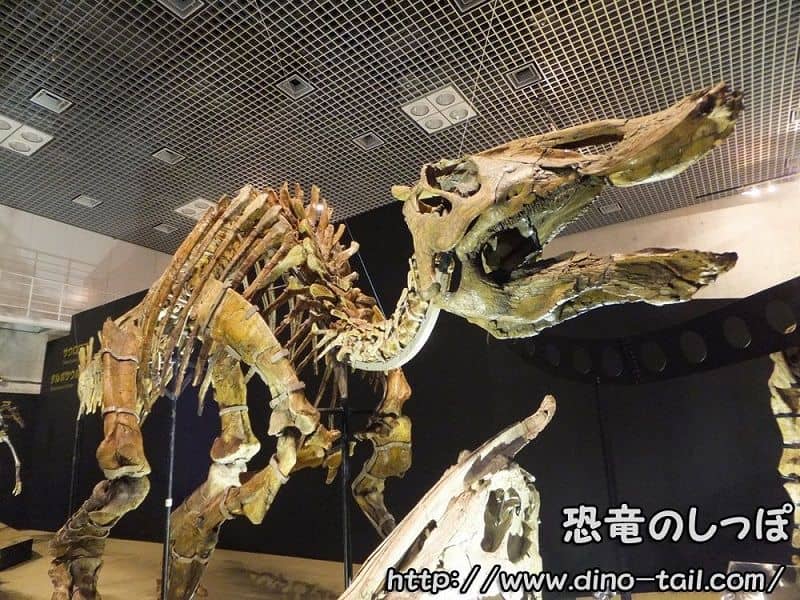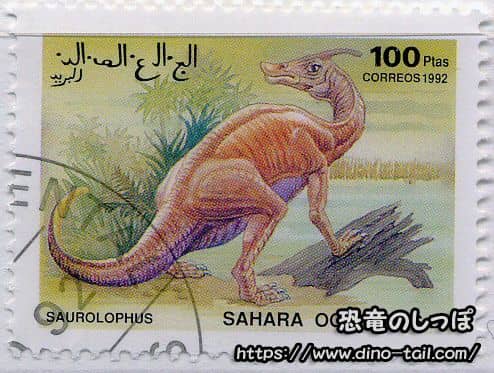About Saurolophus
| Scientific Name (Genus) | Saurolophus |
| Meaning of Name |
Lizard with a crest
sauros (lizard) [Greek] - lophos (crest) [Greek] |
| Classification | Ornithischia, Ornithopoda (Hadrosauridae) |
| Total Length | Approx. 9 - 11m |
| Diet | Herbivorous |
| Period | Late Cretaceous |
| Species |
Saurolophus osborni
Saurolophus angustirostris |
| Year of Paper Publication | 1912 |
| Description Paper |
A crested dinosaur from the Edmonton Cretaceous.
Bulletin of the American Museum of Natural History. 31. by Barnum Brown. 1912. |
Features
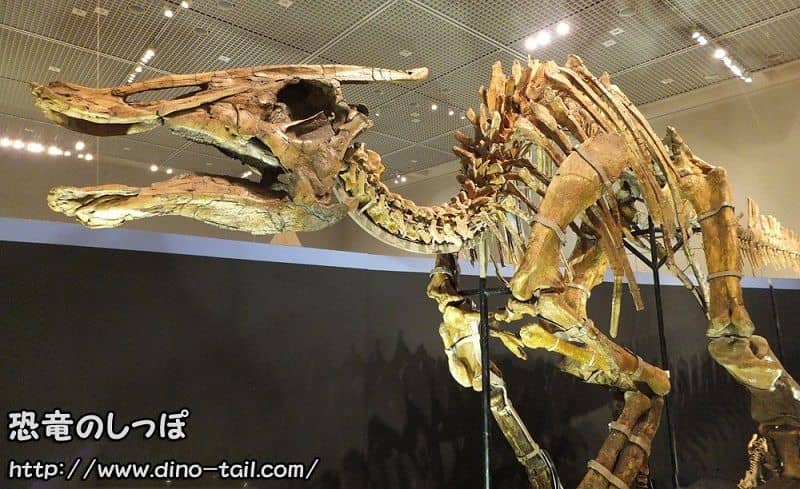
Saurolophus is a representative duck-billed dinosaur from Mongolia.
About 70 million years ago, when Saurolophus lived, Asia and North America were connected by land. In addition to Mongolia, it has also been discovered in Alberta, Canada.
Saurolophus had a spike-like bony crest on its head that extended backward. It was once thought that this crest, like that of Parasaurolophus, was hollow and used to make sounds. However, subsequent research has revealed that this crest was a 'solid projection' of bone all the way through and was not connected to the nasal cavity.
This 'solid crest' is a major feature of the Saurolophinae subfamily, to which Saurolophus belongs.
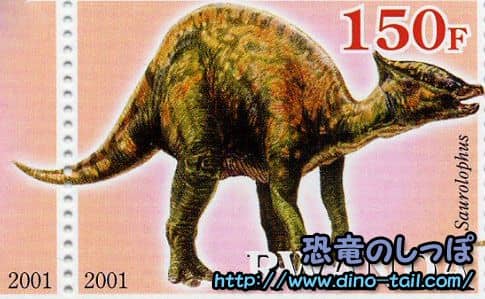
So how did it make sounds? Recent research suggests that the answer may have been in its 'nose' rather than its crest. The bones around Saurolophus's nose have a very large depression, and it is thought that in life, this housed a huge, inflatable soft-tissue sac (nasal diverticulum), similar to that of an elephant seal. They may have inflated this 'nasal balloon' to make loud calls or used it as a display to their own kind.
It had hooves similar to those of a horse on its feet, and the fact that it has been found in both Mongolia and Canada, which were connected by land at the time, suggests that it may have migrated long distances.
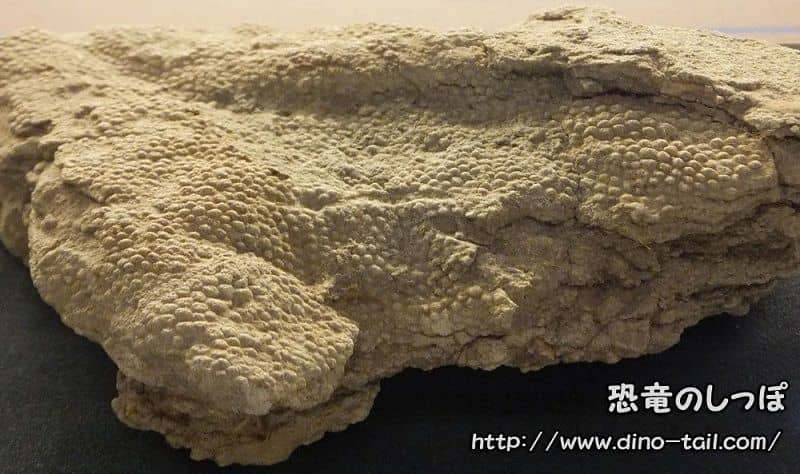
The texture of the skin can be clearly observed.
About the Crest Structure
The internal structure and function of the crest differ among hadrosaurid dinosaurs.
- Lambeosaurinae: They had hollow crests and resonated sounds inside them. Representative lambeosaurines include Parasaurolophus, Corythosaurus, and Olorotitan.
- Saurolophinae: They had solid crests or no crests at all. Therefore, they could not have resonated sounds with their crests. Representative saurolophines include Saurolophus, Edmontosaurus, and Maiasaura.
Tarbosaurus Bite Marks
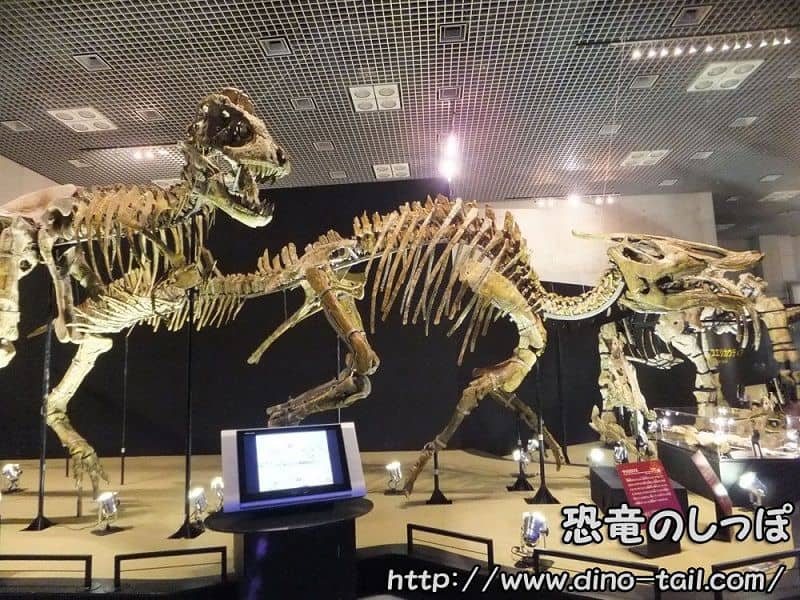
About 70 million years ago, when Saurolophus lived, the Asian tyrant Tarbosaurus roamed Mongolia.
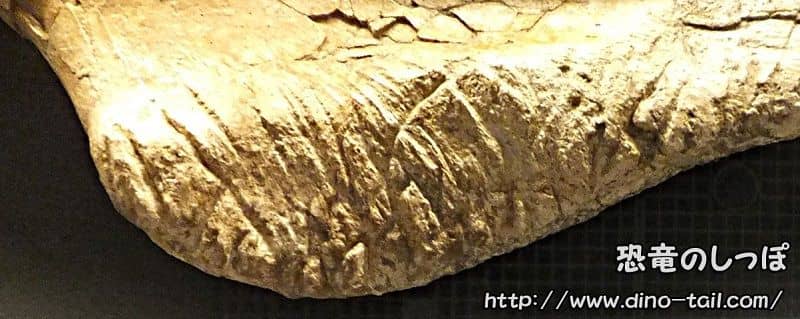
A Saurolophus humerus has also been discovered with bite marks from a carnivorous dinosaur. The size of the bite marks suggests that they were made by a large theropod, probably Tarbosaurus.
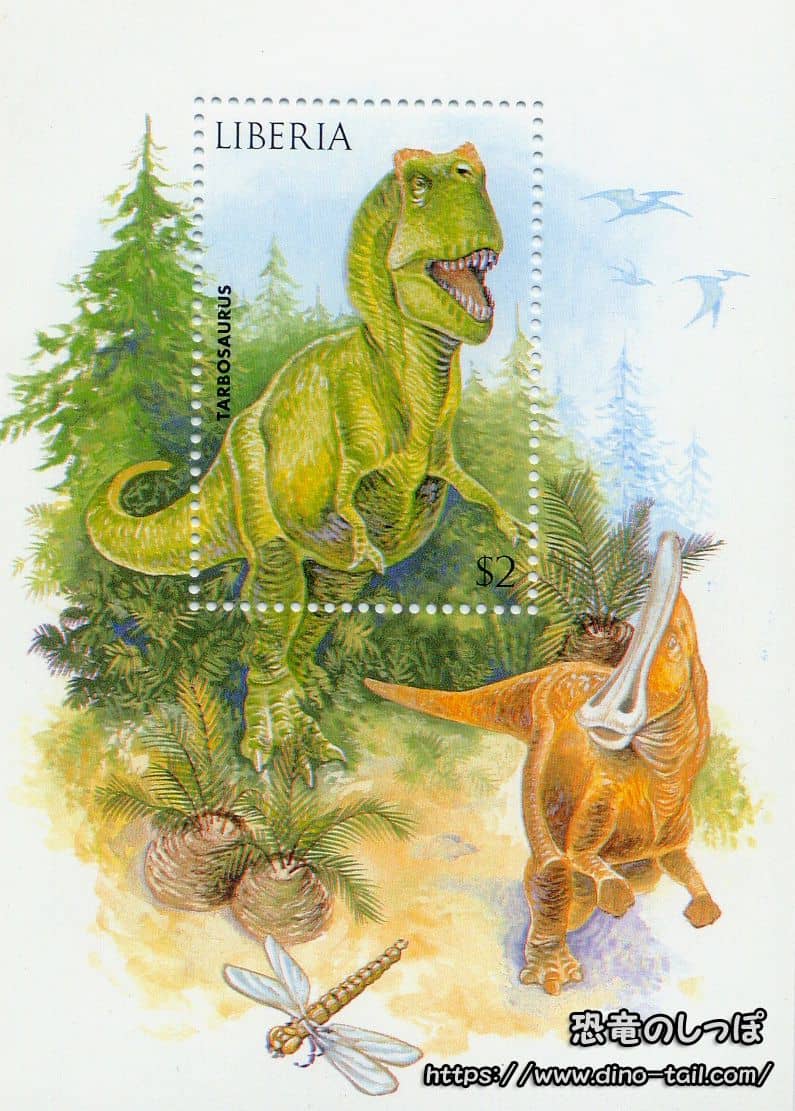
Saurolophus being chased by Tarbosaurus
Fossil Discovery and Description Paper
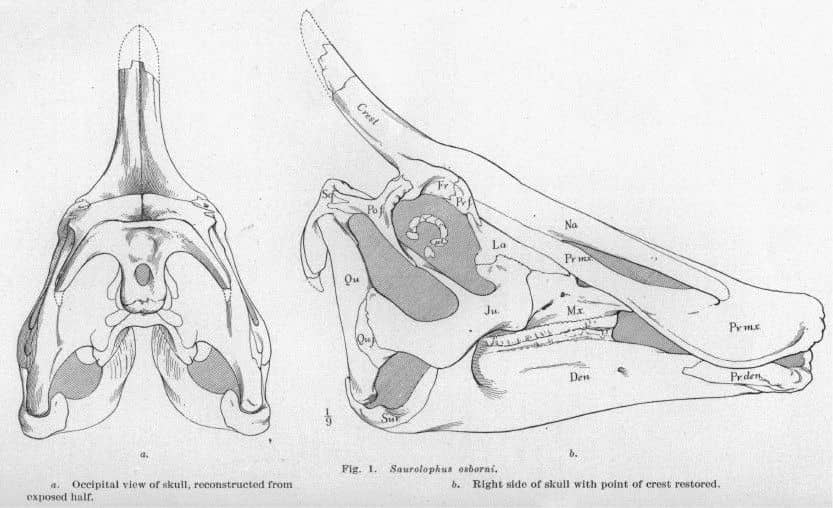
Source: A crested dinosaur from the Edmonton Cretaceous. Bulletin of the American Museum of Natural History. 31. by Barnum Brown. 1912.
The first discovery was in the Horseshoe Canyon Formation in Alberta, Canada. It was discovered in 1911 by Barnum Brown of the American Museum of Natural History, and this completely preserved fossil was assigned the specimen number AMNH 5220. The following year, Barnum Brown described it as the new genus and species Saurolophus osborni.
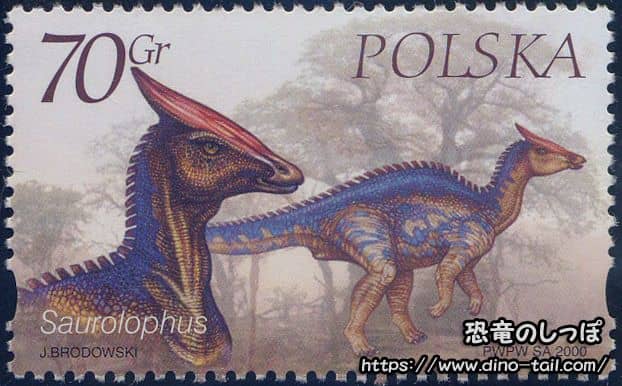
After 1939, it was discovered in large numbers in Asia, particularly in Mongolia. In contrast to the Canadian 'S. osborni,' the Asian Saurolophus was given the species name 'S. angustirostris.' In Asia, Saurolophus can be said to be one of the most prosperous ornithopods.
In 2015, a fossil of a newly hatched juvenile was also found in the Gobi Desert of Mongolia.
Furthermore, in 2022, the discovery of a very complete Saurolophus 'mummy fossil' with preserved skin, scales, tendons, and even some muscle was reported from Alberta, Canada, making worldwide news. It is greatly hoped that this miraculous specimen will solve many of the mysteries that have existed until now and teach us the true appearance of Saurolophus when it was alive.
Saurolophus Stamp & Fossil Gallery
